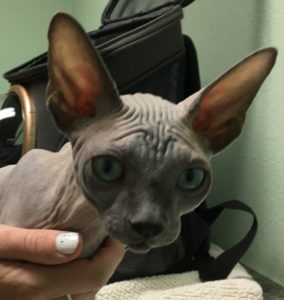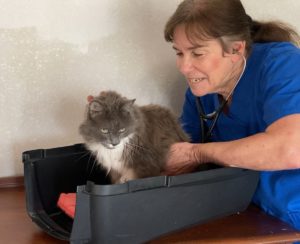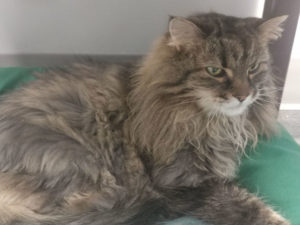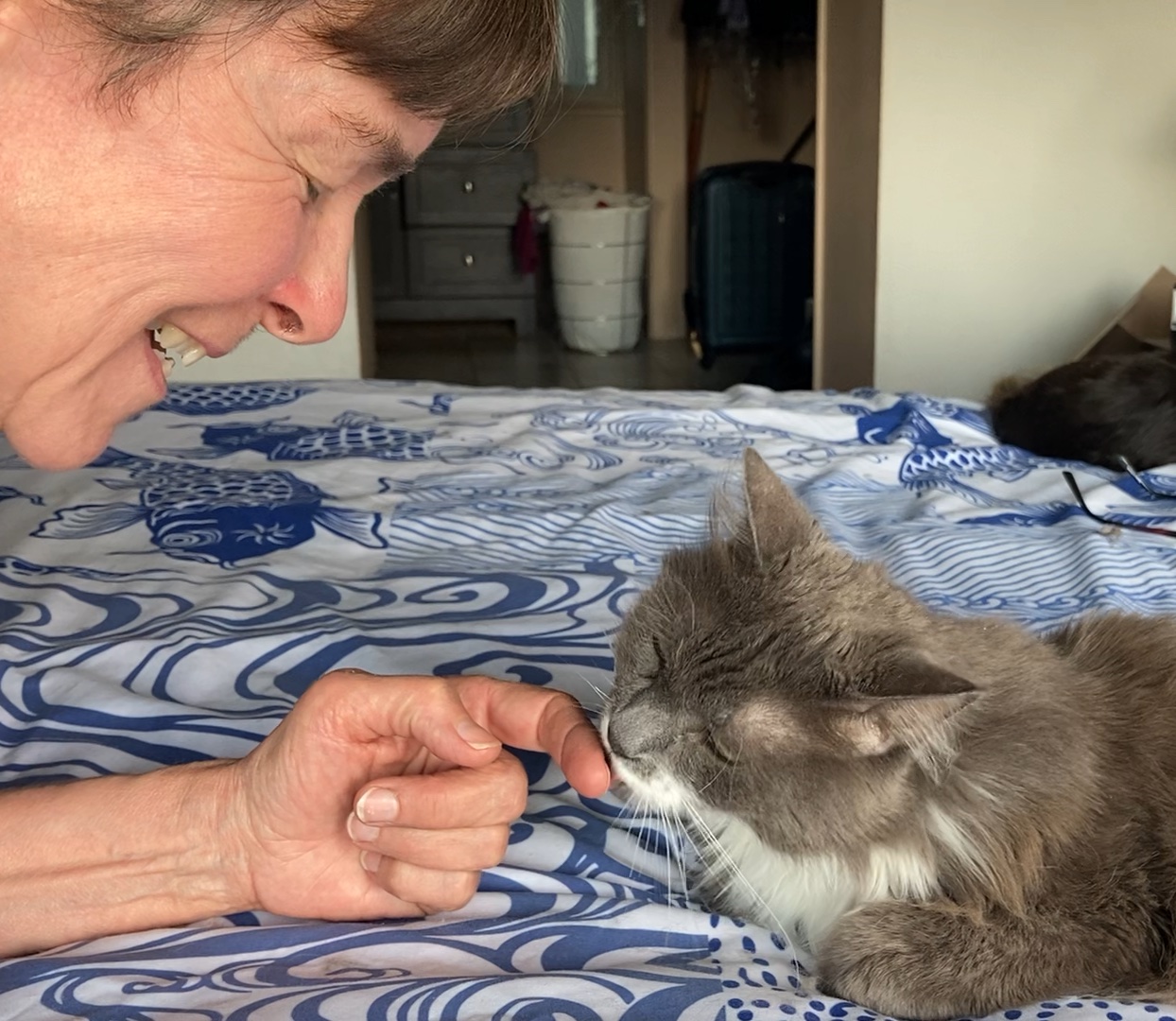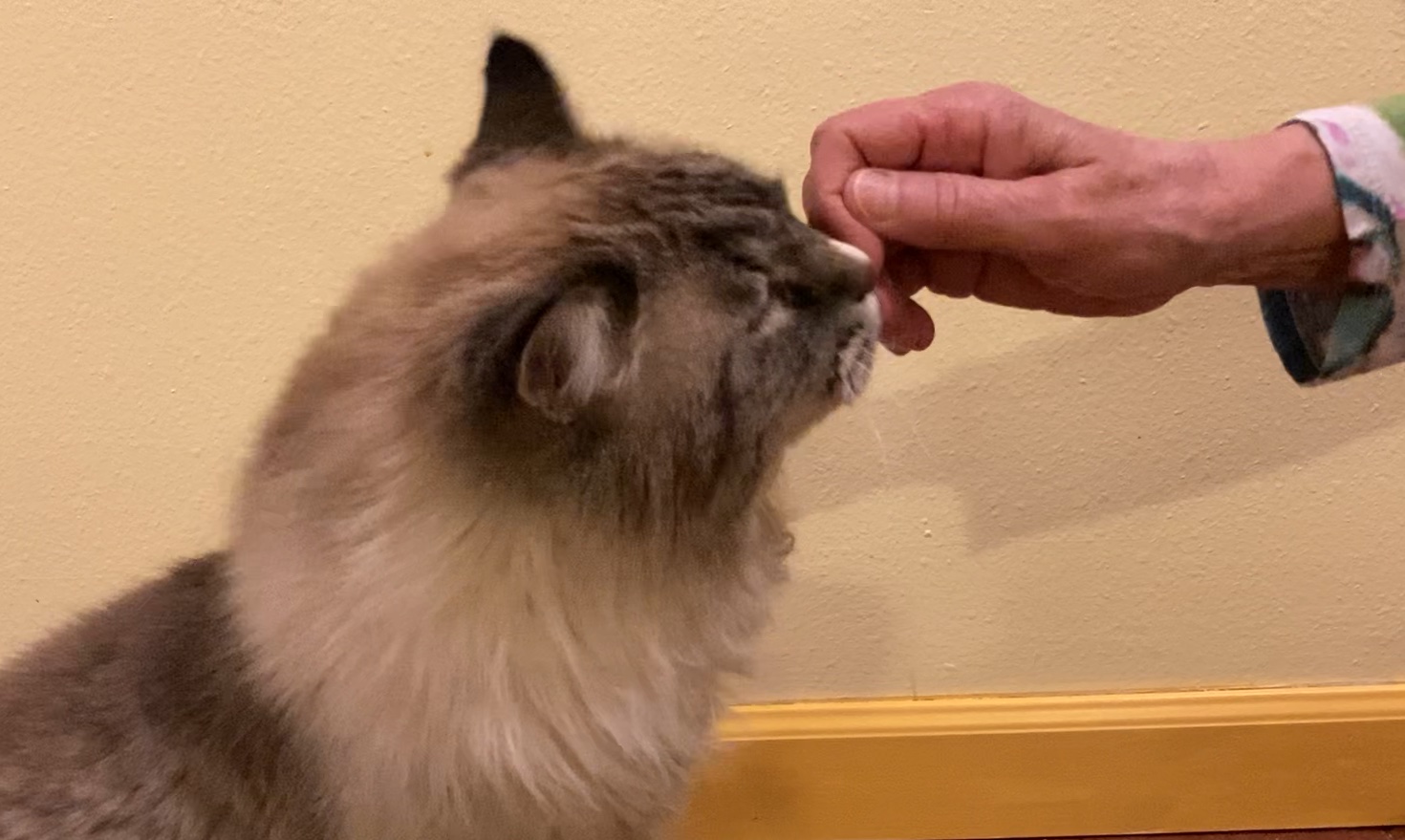At the vet clinic where I work, we see quite a number of “fat cats”. Estimates of the prevalence of feline obesity cluster around 50%. Why are our cats getting fat? (See How Do I Tell if My Cat is Fat?)
Your cat has evolved to eat a diet rich in protein found in meat. His stomach is small and his GI tract is short.
Some experts estimate that a cat’s stomach is about the size of a ping pong ball but it clearly must stretch – when a cat eats a mouse, he often eats the whole thing, tail included!
When cats moved indoors, they gave up a free-roaming life in exchange for the safety of our homes and a consistent food source. Let’s look at the differences between cats in the wild and housecats.
Cats in the wild

- Cats in the wild hunt during the late afternoon to early morning hours when their prey is active
- They sleep during most of the daylight hours.
- A feral cat has about 3 hunting sessions – late afternoon, midnight and early morning.
- He probably eats about 6-8 mice a day (180-240 kcal)
- Most of his waking hours are spent on the prowl, foraging for food.
housecats
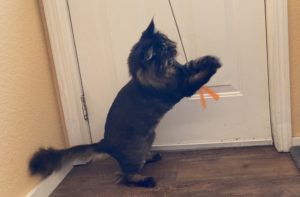
- Some domestic cats live an indoor-outdoor life. These cats may supplement human-provided meals with mice and other things they catch outside.
- Many cats live exclusively indoors.
- Most housecats adopt their owner’s schedule and are awake during the day.
- Housecats are either meal fed at set times or free-fed. Dry cat food may be left out, allowing the cat to “graze” during the day.
Housecats don’t have to expend time and energy to get their food – it is provided for them. When viewed this way, it is not surprising that there are many indoor fat cats. They don’t move around as much as their outdoor counterparts and don’t burn as many calories.
get fat cats moving: food and emotions
Neuroscience identifies 7 basic emotional systems: SEEKING, CARE, PLAY, and LUST are considered “positive”. FEAR, SADNESS, and ANGER are viewed as “negative”.
The SEEKING system is thought to be the strongest of the primary emotional systems. It’s what gets animals out looking for food, looking for a mate, looking for other resources.
When the SEEKING system is activated:
- The brain releases dopamine, a neurotransmitter that makes you feel pleasure.
- It is the rewarding feeling you get when you are looking for something and find it.
- Once you’ve found the object of your desire, the brain shuts off the dopamine and other emotions are activated.
the hunting cat
Cats are skilled hunters. Hunting is an expression of the SEEKING system. The cat finds this activity pleasurable (dopamine is released) and rewarding (he enjoys the positive emotions that accompany eating). By providing your cat with food, he still enjoys the positive feelings that come with eating but the pleasure felt while hunting is not there.
Sedentary indoor cats with nothing to do may become bored and anxious. Many turn to eating as a self-soothing behavior, consuming more calories than needed – now, we have fat cats.
The seeking system is strong in the hunting cat – cats will stop eating to pursue new prey!
get fat cats moving for health and happiness
- Divide your cat’s food into 4-5 meals – this gives the cat something to do and look forward to.
- Make small meals a “hunting” experience!
FOOD PUZZLES
Although cats are born “freeloaders”, they can be persuaded to work for food using food puzzles. A food puzzle allows a cat to engage in foraging behavior, like the wild cat picking up the odd insect or lizard on his prowl.
Food puzzles help reduce boredom and engage cats mentally. Indoor cats in particular may benefit from using food puzzles.
HAVE FUN – TOSS A MEAL!
Toss your cat’s dry food, a piece at a time, down the hallway. He will have to chase the kibbles, using his hearing, sight and paws to bring down the “prey”. Older kitties may do better at catching kibbles if you “skid” them along a hard surface – skidding gives the cat a longer auditory signature to locate the food. (See “Cats Avoid Fighting Over Treats“).
WHEN YOU’RE NOT AT HOME

There are timed feeders like the Cat Mate that can accommodate some smaller food puzzles such as Doc and Phoebe’s no-bowl feeders. Alternatively, a Lickimat can be cut to fit into a timed or microchip feeder. Silicone ice cube trays or candy molds can also be cut to fit a feeder and promote foraging.
Hi Tech options: There are now feeders that will toss treats. You can start the sessions remotely through an app on your phone. The PetCube has a camera and microphone that you can use to talk to your cat and watch him. The Pet Cube is perhaps more geared toward tossing treats – it works well, though, with larger cat kibble such the dental diets and Greenies dental treats.
Of course, there are other reasons your cat may put on weight, for example, steroid therapy can be accompanied by weight gain. Your vet is your best resource to advise you on an appropriate calorie intake for your cat.
But it is rarely a mistake to pay attention to your cat’s behavioral health – take advantage of his superb hunting skills to get him moving! He will be healthier and happier.

 A common complaint of cat owners is that their cat does not always use the litter box. This can be a nuisance – cat urine can have a strong odor particularly if the cat is not neutered or spayed. Soft stools can be a challenge to clean up. I am always surprised at how many people accept the “out of the box” incidents and use potty pads or towels to manage the mess. What can you do if this happens to you?
A common complaint of cat owners is that their cat does not always use the litter box. This can be a nuisance – cat urine can have a strong odor particularly if the cat is not neutered or spayed. Soft stools can be a challenge to clean up. I am always surprised at how many people accept the “out of the box” incidents and use potty pads or towels to manage the mess. What can you do if this happens to you? Does the color of your cat’s coat mean anything? Is there a link between coat color and temperament in cats?
Does the color of your cat’s coat mean anything? Is there a link between coat color and temperament in cats?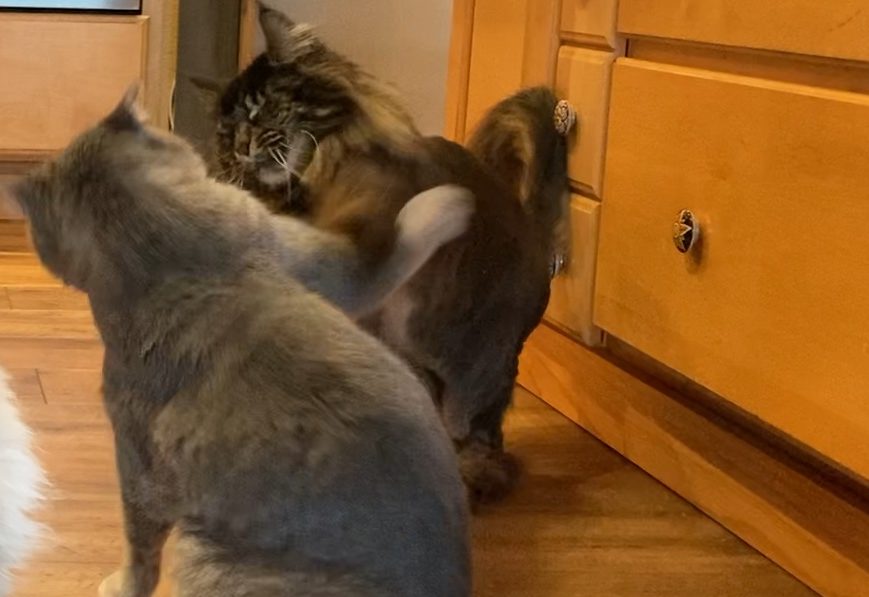



 It is not surprising that cats in taped squares became the subject of a research study investigating
It is not surprising that cats in taped squares became the subject of a research study investigating 